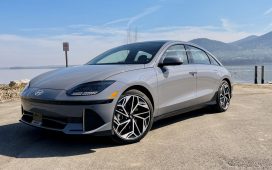Uber is splitting its annual product event into two separate gatherings in order to place more emphasis on its efforts to go carbon neutral.
The first event, entitled Go/Get, will be held May 17th in New York City and will focus on “family and travel,” the company said. The second will be called Go/Get Zero and will be convened in London on June 8th. That event will highlight the various ways Uber plans to tackle climate change.
The choice to hold the sustainability event in London is no accident. The city is a microcosm of the company’s efforts to green its platform, with 15 percent of the company’s vehicle kilometers traveled done in electric vehicles. Uber drivers in London are also the first to get access to a fleet of EVs through the company’s expanded partnership with rental car company Hertz.
That event will highlight the various ways Uber plans to tackle climate change
The problem is certainly enormous, and Uber’s goals are not guaranteed success. A recent study from Carnegie Mellon found that trips in Uber and Lyft vehicles generate around 20 percent more greenhouse gases than regular private vehicles. The culprit is “deadheading,” in which ridehail drivers cruise around with no passengers in the car between ride requests.
The disproportionate amount of pollution generated by Uber and Lyft vehicles has prompted some governments to mandate that ridehail companies go carbon neutral. The state of California and New York City have both said the companies will be required to be zero emission by 2030.
But getting the millions of people who drive for Uber and Lyft to switch to electric vehicles will be no easy task. Ridehail drivers are classified as independent contractors, and many use their personal cars to drive for not just one but several gig economy companies. Also, EVs tend to be more expensive than gas vehicles despite costing less to fuel and maintain. That steep upfront cost may make it a challenge for many drivers, who typically operate with incredibly tight margins, to make the switch.











